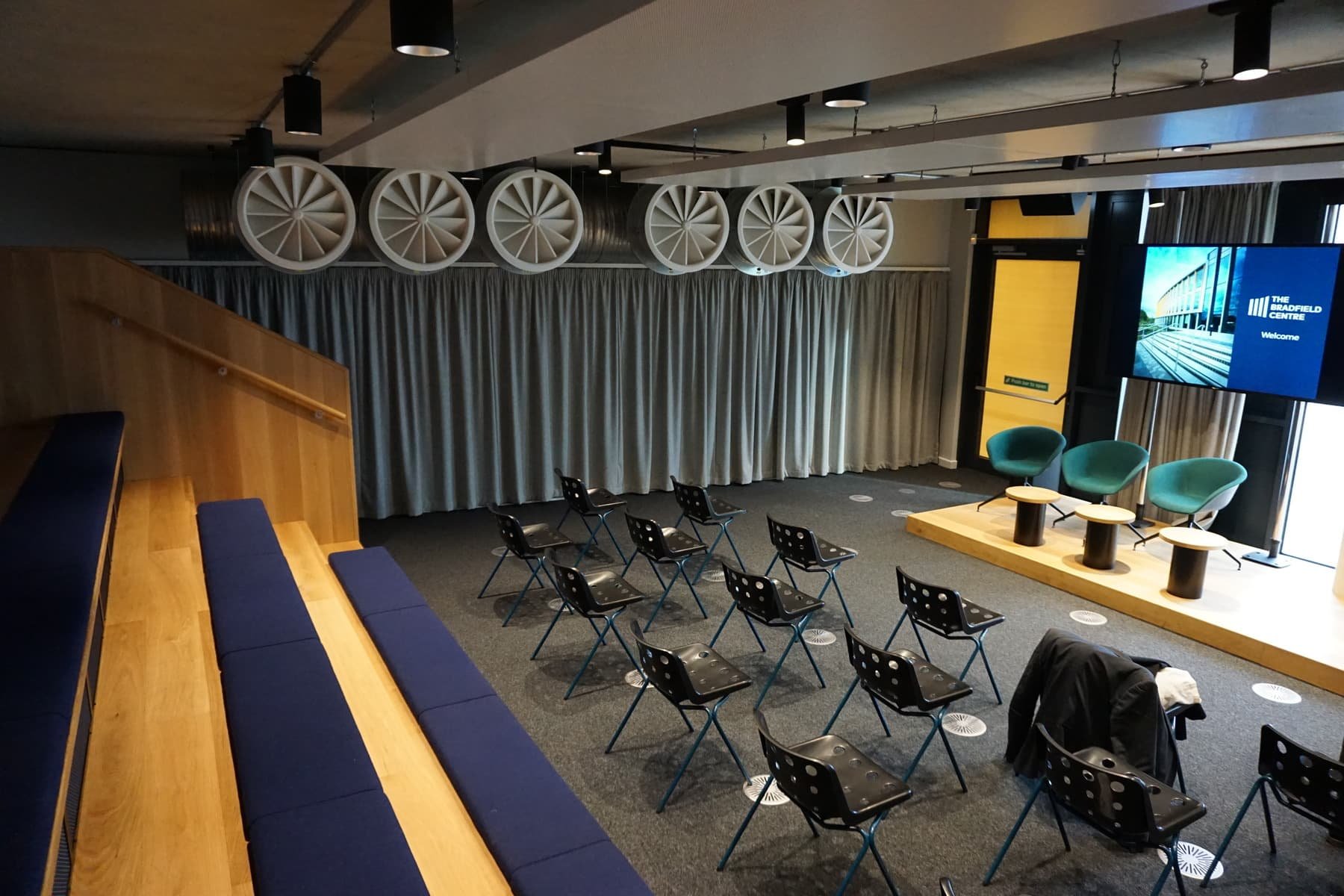
Acoustic Design
The acoustic design of an internal or external space can have a material impact on its use and how its quality is perceived. Noise and poor acoustics can have wide-reaching implications on health and well-being, an issue which is now recognised by emerging guidance and noise policies adopted by local authorities.
CPW’s Acousticians have significant experience in the acoustic design of the built environment across all sectors.
The impact of sound
Memberships
Architectural & Building Acoustics
Using our significant experience of modern architectural practices we can develop the fabric of buildings so that they achieve the sound insulation and room acoustic requirements of the project. We can offer the following:
Development of the sound insulation design of internal walls, floors and doors
Design of building envelopes’ sound insulation including passive ventilation and cooling system to meet the sound insulation requirements
Junction detail design where walls, floors and MEP penetrations meet with other parts of the building fabric to avoid flanking
Design and specification of internal finishes to meet the room acoustic / reverberation time requirements
Design of specialist constructions such as high-performance floating floors, box-in-box constructions and whole building isolation systems.
Assessments in accordance with The Building Regulations ADE, BS 8233, BB93, HTM 08-01, BCO guidance, amongst others
Ground Borne Vibration & Structure Borne Noise
New or existing buildings near to vibration generating infrastructure such as roads, railways and industrial sources may be adversely affected by vibration. We offer the following services:
Measurement of vibration within the ground or within existing buildings using dedicated vibration meters
Assessment of vibration in accordance with BS 6472, BS 7385, VC Curves or other appropriate assessment methods
Assessment of structureborne noise in buildings resulting from groundborne vibration
Specification of vibration isolation systems including whole building isolation and room isolation
Environmental Noise Impact Assessments
Most new developments require a form of assessment to demonstrate what their noise impact will be to the surrounding environment and any mitigation required to reduce noise to acceptable levels. We offer the following:
Noise surveys and long-term monitoring using Class 1 sound level meters
Noise and vibration impact assessment in accordance with BS 4142, Pro PG, AVO Guidance and BS 6472.
Noise & Vibration chapters as part of an Environmental Impact Assessment (EIA)
Consultation & negotiation with Local Authorities on noise requirements and policies
Development of noise mitigation measures for infrastructure and buildings
Acoustic Modelling & Auralisation Simulations
Computer software packages can be used to model internal room acoustics and external noise propagation. We offer the following:
Internal room acoustics modelling to determine room acoustics, speech intelligibility, reverberation time and other room acoustics parameters
Modelling of PA/VA systems for auditoria, stadia and other rooms and areas where such systems will be used
Room impulse response and auralisations. These can be used to develop an acoustic simulation of how a room will sound.
External noise modelling of roads, building services plant and building structures
Building Services Noise & Vibration
Building services systems must be properly designed so that their noise and vibration does not cause disturbance to internal and external receptors. This requires careful analysis of the individual plant items’ noise and vibration profile and the structure within which the plant is installed. We offer the following:
Modelling of plant noise within buildings and to external receptors
Specification of anti-vibration systems
Specification of noise control systems such as attenuators, enclosures and screening systems
Assessment of noise problems, analysis and commissioning
Environmental Noise Surveys
Noise surveys are required to determine the noise climate around a given area. We offer the following:
Long-term unattended, and short-term noise surveys using Class One Sound level meters
Noise surveys in accordance with BS 7445 and surveys to suit the needs of BS 4142, ProPG, HTM 08-01, BB93, amongst others
Construction noise & vibration monitoring
Sound Insulation Testing
Sound insulation tests can be undertaken within buildings to determine the sound insulation performance of a separating construction, be it a floor, wall or façade system. The tests are usually undertaken on a finished building to verify that the required level of sound insulation is being achieved, however, they are also undertaken on existing buildings. We offer the following:
Airborne and impact sound insulation testing in accordance with BS EN ISO 16283 2016
Sound insulation fault finding and diagnosis
BREEAM Noise Assessments
In order to obtain BREEAM Credits, acoustic assessments are required to demonstrate compliance. We offer the following:
Assessments of internal architectural acoustics in accordance with BREEAM HEA 05
Assessment of noise emission from building services systems in accordance with BREEAM HEA Pol 05
Testing on completion to verify that the BREEAM acoustic performance requirements have been met
Featured project
The University of Lincoln came to CPW for a huge new extension to their Engineering Hub to make room for the Schools of Engineering, Computing, Physics, and Maths. Introducing the Isaac Newton Building, an extension packed with cutting-edge new technology laboratories and workshops, as well as seminar and lecture space and a new catering outlet.
Not only did this project meet the University’s environmental standards but we are also proud that this building achieved an EPC A rating as a result of our careful commitment to sustainability.
Frequently asked questions
-
Architectural or building acoustics is the science of sound engineering. In the built environment, architectural acoustics refer to how sound travels and is received within and outside a building and influences how people live and work in an environment. Controlling sound absorption, transmission, and potential noise pollution can make a big difference to how people function in their surroundings.
-
Architectural and building acoustics are a vital part of designing high-performance buildings that meet the functional demands. For example, a concert hall will need a very different acoustic design to a residential development or a school building. The acoustics of a building will determine whether sound needs to be amplified in certain areas, reflected, dampened or absorbed to create a healthy, comfortable living and working environment.
-
A noise impact assessment is usually requested by local authorities as part of a planning application in order to assess the potential environmental noise impact of a construction project on the surrounding area. These assessments can be applied to new developments and proposed changes or extensions to existing buildings.





